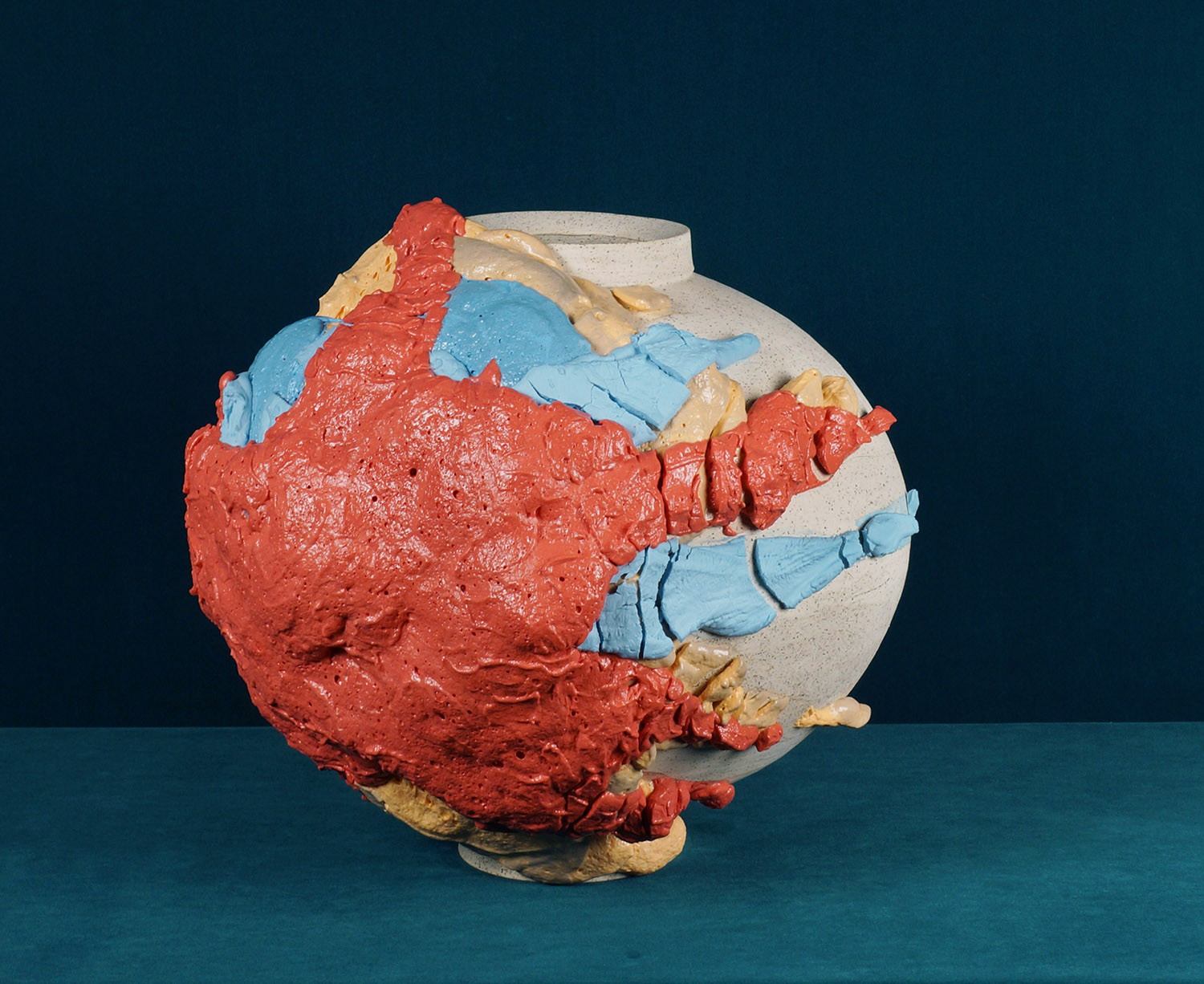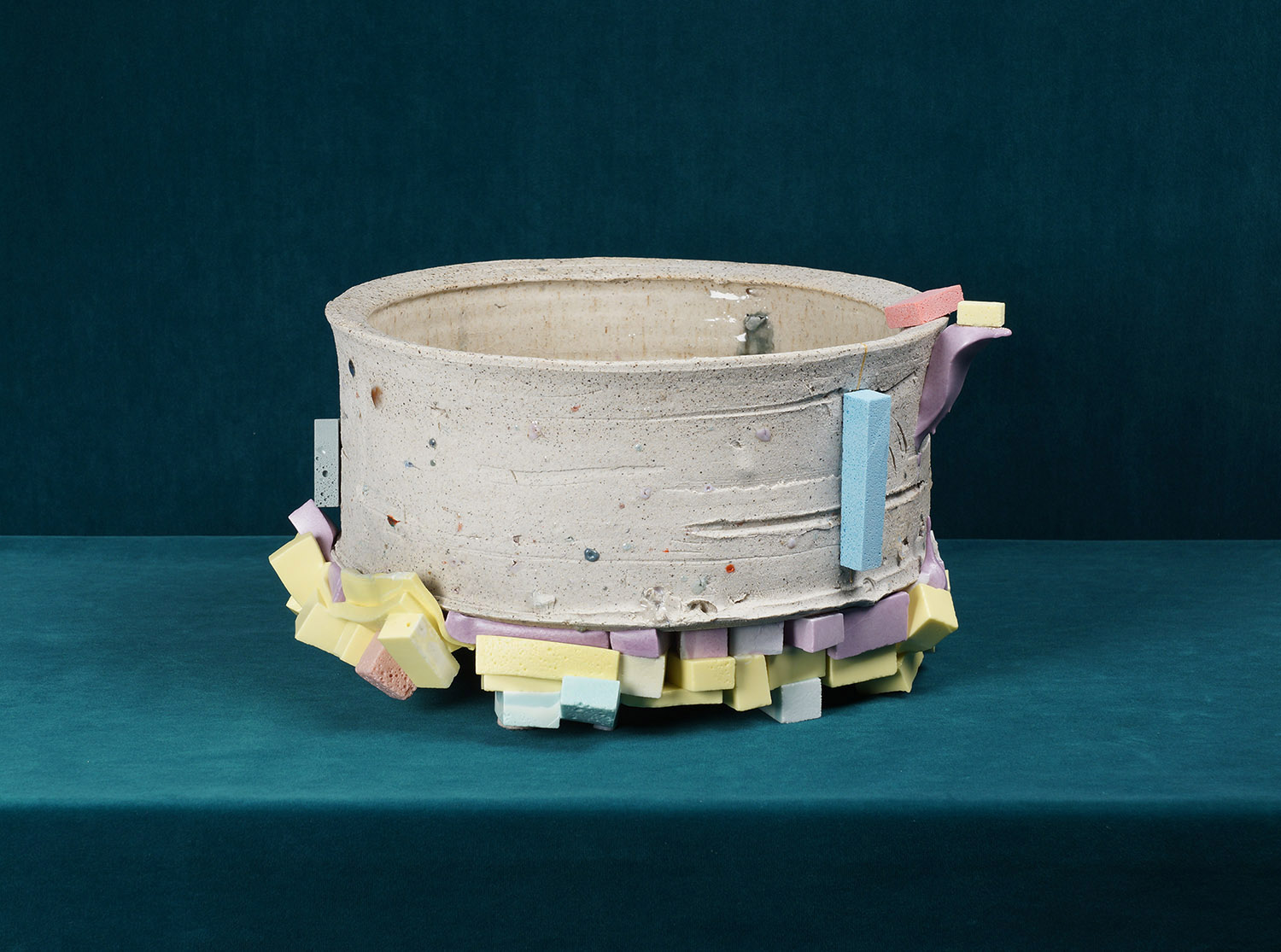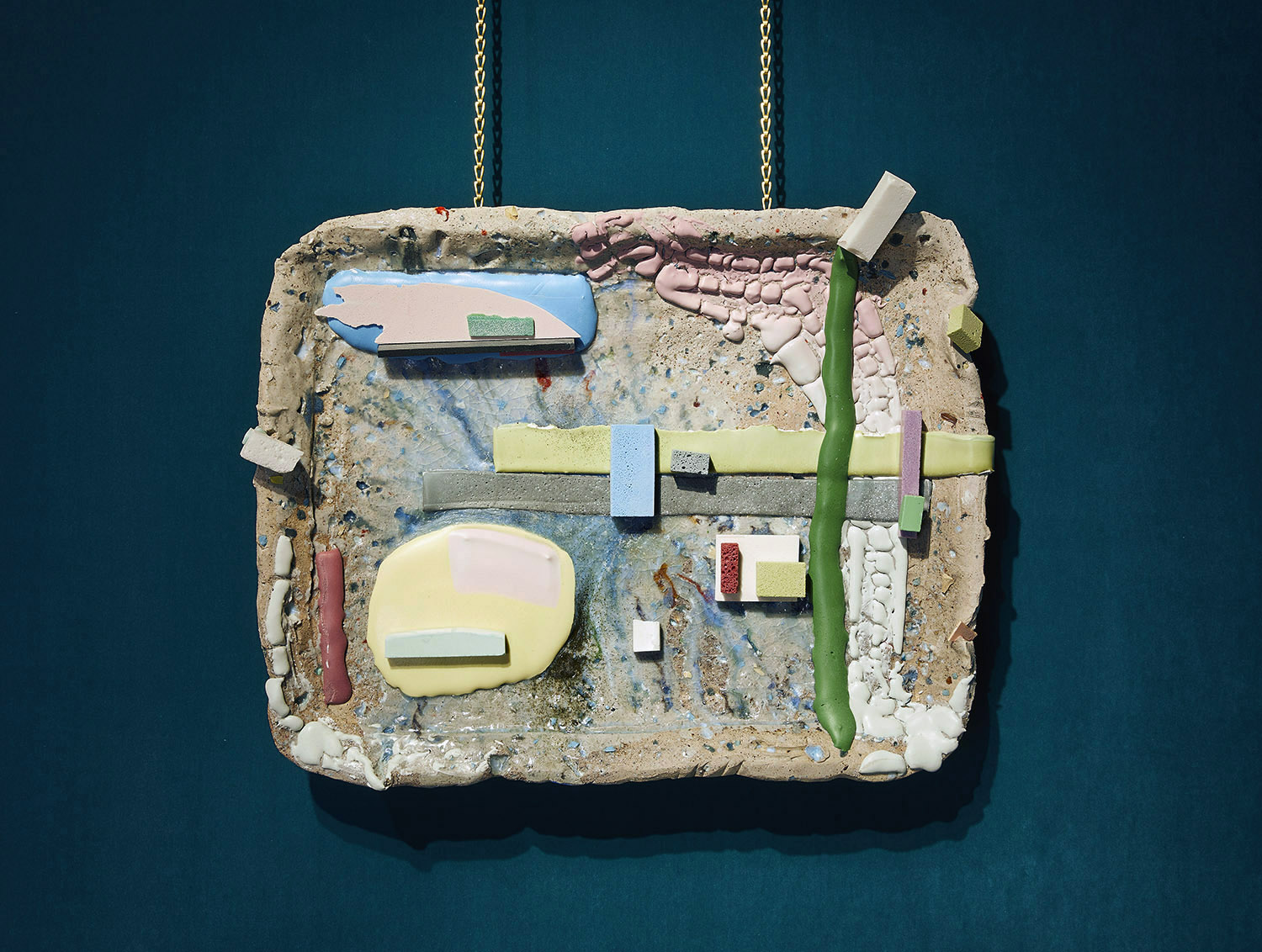Deconsructed Glazed Ceramics
by
Alex Zablocki, USA
Why paint with glaze when you can build with it? Why limit yourself to the conventional when new ways wait to be found? Alex’s work is a rejection of the path of least resistance, it is a celebration of innovation and discovery. At the heart of his work is a rational but playful strategy of deconstruction that upends expectations and recasts tradition. Without appearing contrived, Alex frees his materials and forms of limitations to reveal fresh insights. The artist’s signature 'glaze stack' technique demonstrates his approach in a most illustrative and surprising manner. Clay and glaze are the two primary elements that ceramicists have manipulated for millennia; glaze is to clay what paint is to canvas. Yet, Alex reminds us that glaze is so much more than paint; it is glass that bubbles and pools as thick as you please – even becoming structural when cast as bricks and fired to bond. His blocks of glaze are applied to granular, grog-infused clay to draw attention to the substance and materiality of the typically smooth material. Alternating between fine, wheel-thrown forms and coil-built structures of exceptional thickness, Alex never misses an opportunity to emphasize the physical properties of his material. In Alex’s Orb vases, old tricks are reinvented. Even their name teases at deconstruction by parsing the iconic Moon Jar as a simple orb. Made from conjoined coil-built hemispheres shaped on an old leather exercise ball, the essence of the traditionally bipartite construction remains unviolated even as it is reimagined with a lumpen body and contrastingly crisp neck and foot. Alex applies a decidedly less sympathetic treatment to the historically unadorned surface, piling on thick, frothy strata of glaze in successive firings, creating a robust and sculptural dimensionality. With each firing, the dense glaze layers increasingly crush and pull at the thick-walled vessel, exerting a vice-like power as the glaze contracts during vitrification. The force is such that the vessel surface develops shale-like cracks as evidence of the force at play from the icing-like glaze. The physicality of the artist’s work is indulgently self-evident, honestly exposing the qualities of the materials it is made from. His process and strategy engender a contradictory aesthetic; at once fanciful and synthetic yet oddly natural and awesome.
|




